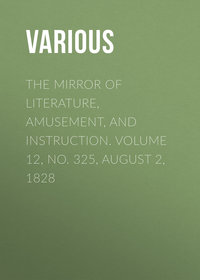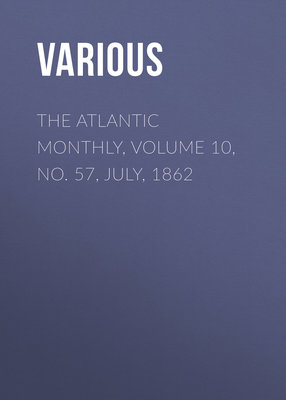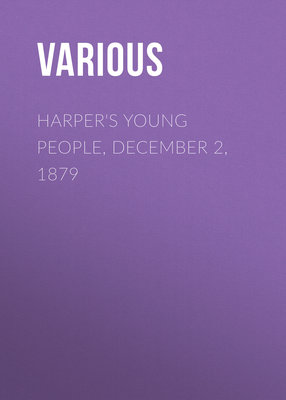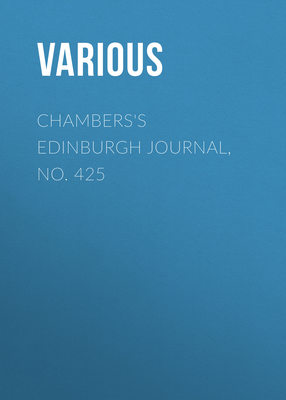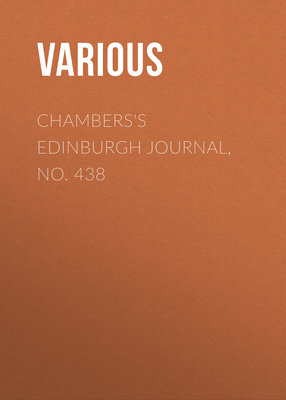Kitabı oku: «The Mirror of Literature, Amusement, and Instruction. Volume 12, No. 325, August 2, 1828», sayfa 4
The prayer alluded to (see Scot's Discovery, b. 15, c. 2) is of the most diabolical and blasphemous nature. A contemporary writer observes, that there is not the least doubt but that the witches of the olden time observed all the formalities of these ridiculous and disgusting ceremonies to the very letter. In later times, however, though the formalities were quite simple, yet the hag of the sixteenth century exercised her vocation with all its ancient potency.
The broomstick has been the theme of many a story connected with this subject:
—As men in sleep, though motionless they lie,
Fledged by a dream, believe they mount and fly;
So witches some enchanted wand bestride
And think they through the airy regions ride.
But the reason of its possessing such extensive powers of locomotion, or rather aërostation, is not generally understood. The witches either steal or dig dead children out of their graves, which are then seethed in a cauldron, and the ointment and liquid so produced, enables them, "observing certain ceremonies, to immediately become a master, or rather a mistresse, in the practise or faculty" of flying in the air:
—High in, air, amid the rising storm
-–wrapt in midnight
Her doubtful form appears and fades!
Her spirits are abroad! they do her bidding!
Hark to that shriek!
In addition to the above, they possessed another very useful faculty, for the transfer of the patent of which, I doubt not scores of adventurers would have given a tolerable consideration. It is briefly that of "sailing in an egg-shell, a cockle, or a muscle-shell, through and under the tempestuous seas."
From the length to which this article has extended, I must reserve an account of witch-finders, charms, dreams, and confessions, &c. for the next and concluding paper. VYVYAN.
Spirit of Discovery
Paper from Straw.
At a recent meeting of the Royal Institution, there were exhibited some specimens of paper manufactured from straw, by a new process.
Hardening Steel.
From the observation of travellers, that the manufacture of Damascus blades was carried on only during the time when the north winds occurred, M. Anozoff made experiments on the hardening of steel instruments, by putting them, when heated, into a powerful current of air, instead of quenching them in water. From the experiments already made, he expects ultimate success. He finds that, for very sharp-edged instruments, this method is much better than the ordinary one; that the colder the air and the more rapid its stream, the greater is the effect. The effect varies with the thickness of the mass to be hardened. The method succeeds well with case-hardened goods.– From the French.
Detection of Blood.
A controversy has recently taken place in Paris, relative to the efficacy of certain chemical means of ascertaining whether dried spots or stains of matter suspected to be blood, are or were blood, or not. M. Orfila gives various chemical characters of blood under such circumstances, which he thinks sufficient to enable an accurate discrimination. This opinion is opposed by M. Raspail, who states, that all the indications supposed to belong to true blood, may be obtained from, linen rags, dipped, not into blood, but into a mixture of white of egg and infusion of madder, and that, therefore, the indications are injurious rather than useful.
Cedars of Lebanon.
Mr. Wolff, the missionary, counted on Mount Lebanus, thirteen large and ancient cedars, besides the numerous small ones, in the whole 387 trees. The largest of these trees was about 15 feet high, not one-third of the height of hundreds of English cedars; for instance, those at Whitton, Pain's Hill, Caenwood, and Juniper Hall, near Dorking.
Leeches.
In the Medical Repository, a case is quoted, where some leeches, which had been employed first on a syphylitic patient and afterwards on an infant, communicated the disease to the latter.
Stinging Flies.
There is a fly which exteriorly much resembles the house-fly, and which is often very troublesome about this time; this is called the stinging fly, one of the greatest plagues to cattle, as well as to persons wearing thin stockings.
Mont Blanc.
The height of Mont Blanc and of the Lake of Geneva has lately been carefully ascertained by M. Roger, an officer of engineers in the service of the Swiss Confederation. The summit of the mountain appears to be 4,435 metres, or 14,542 English feet above the Lake of Geneva, and the surface of the Lake 367 metres, or 1,233 English feet above the sea. The mountain is, therefore, 15,775 feet above the level of the sea.
Bird Catching.
The golden-crested wren may be taken by striking the bough upon which it is sitting, sharply, with a stone or stick. The timid bird immediately drops to the ground, and generally dead. As their skins are tender, those who want them for stuffing will find this preferable to using the gun.—Mag. Nat. Hist.
Shower of Herrings in Ross-shire.
In April last, as Major Forbes, of Fodderty, in Strathpfeffer, was traversing a field on his farm, he found a considerable portion of the ground covered with herring fry, of from three to four inches in length. The fish were fresh and entire, and had no appearance of being dropped by birds—a medium by which they must have been bruised and mutilated. The only rational conjecture that can be formed of the circumstance is, that the fish were transported thither in a water-spout—a phenomenon that has before occurred in the same county. The Firth of Dengwall lies at a distance of three miles from the place in question; but no obstruction occurs between the field and the sea, the whole is a level strath or plain, and water spouts have been known to travel even farther than this.—Inverness Courier.
Spanish Asses.
The Duke of Buckingham has, at his seat at Avington, a team of Spanish asses, resembling the zebra in appearance, which are extremely tractable, and take more freely to the collar than any of our native species.
Drawing Instrument.
An ingenious invention of this description was recently exhibited at the Royal Institution. A pencil and a small bead are so connected together by means of a thread passing over pullies, that if a person, looking through an eye-piece, will hold the pencil upon a sheet of paper, and then, watching the bead, will move his hand, so that the bead shall trace the lines of any object that is selected or looked at, he will find that, whilst he has been doing this, he has also made a drawing of the subject upon the paper; for the pencil and the bead describe exactly the same lines, though upon different planes. Thus, a drawing is made, without even looking at the paper, but solely at the object.
White Cats.
In a recent number we quoted from Loudon's Gardener's Magazine, that "white cats with blue eyes are always deaf," of which extraordinary fact there is the following confirmation in the _Magazine of Natural History_, No. 2, likewise conducted by Mr. Loudon:—"Some years ago a white cat of the Persian kind (probably not a thorough-bred one) procured from Lord Dudley's at Hindley, was kept in my family as a favourite. The animal was a female, quite white, and perfectly deaf. She produced, at various times, many litters of kittens, of which, generally, some were quite white, others more or less mottled, tabby, &c. But the extraordinary circumstance is, that of the offspring produced at one and the same birth, such as, like the mother, were entirely white, were, like her, invariably deaf; while those that had the least speck of colour on their fur, as invariably possessed the usual faculty of hearing—" W. T. Bree, Allersley Rectory, near Coventry.
Ultramarine.
A French journal announces a discovery of the method of making Ultramarine, by which means the public are supplied with the article at one guinea per ounce, the colour having hitherto been sold from two guineas to two pounds ten shillings per ounce.
Indication of Storms.
Professor Scott, of Sandhurst College, observed in Shetland, that drinking-glasses placed in an inverted position upon a shelf in a cupboard, on the ground floor of Belmont House, occasionally emitted sounds as if they were tapped with a knife, or raised up a little, and then let fall on the shelf. These sounds preceded wind, and when they occurred, boats and vessels were immediately secured. The strength of the sound is said to be proportional to the tempest that follows.—Brewster's Jour.
To preserve Wine in draught.
M. Imery, of Toulouse, gives the following simple means of preserving wine in draught for a considerable time; it is sufficient to pour into the cask a flask of fine olive oil. The wine may thus continue in draught for more than a year. The oil spread in a thin layer upon the surface of the wine, hinders the evaporation of its alcoholic part, and prevents it from combining with the atmospheric air, which would not only turn the wine sour, but change its constituent parts.
Union of the Atlantic and Pacific.
A letter from Amsterdam states, that the project of cutting a canal, to unite the Gulf of Mexico with the Pacific Ocean, is about to be revived.
Vesuvius.
An eruption took place on the morning of last March 22nd. An eye-witness writes "the cone of the mountain puts you in mind of an immense piece of artillery, firing red-hot stones, and ashes, and smoke into the atmosphere; or, of a huge animal in pain, groaning;, crying, and vomiting; or, like an immense whale in the arctic circle, blowing after it has been struck with several harpoons."
Bees in Mourning.
A correspondent in Loudon's Magazine of Natural History, states that in the neighbourhood of Coventry, there is a superstitious belief, that in the event of the death of any of the family, it is necessary to inform the bees of the circumstance, otherwise they will desert the hive, and seek out other quarters.
Rare Insects.
There exists in Livonia, a very rare insect, which is not met with in more northern countries, and whose existence was for a long time considered doubtful, called the Furia Infernalis. It is so small that it is very difficult to distinguish it by the naked eye; and its sting produces a swelling, which, unless a proper remedy be applied, proves mortal.
During the hay harvest, other insects named Meggar, occasion great injury both to men and beasts. They are of the size of a grain of sand. At sunset they appear in great numbers, descend in a perpendicular line, pierce the strongest linen, and cause an itching, and pustules, which if scratched, become dangerous. Cattle, which breathe these insects, are attacked with swellings in the throat, which destroy them, unless promptly relieved.
